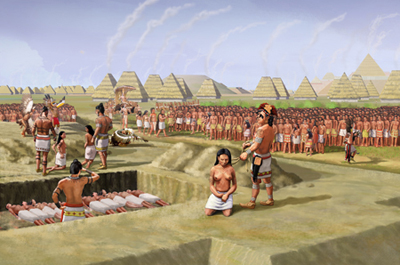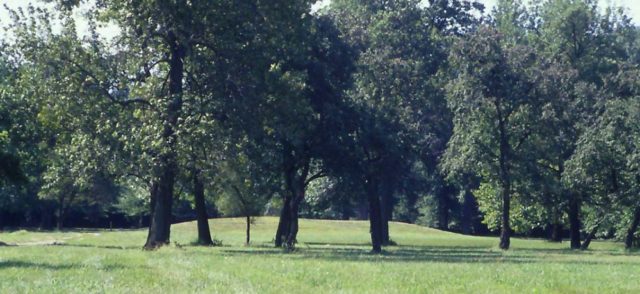About 5 years ago, archaeologists were excavating an ancient city outside of St. Louis and found a vast burial site with an uncommon central feature. Two bodies were arranged on a bed of beads, with countless other bodies circling them. It was believed that the elaborate beaded burial at Cahokia was created as a memorial to male power, but researchers now propose that is not the case.
A new found investigation of the remains shows that one of these key bodies is actually female, and researchers state that the finding of similar male-female pairs, along with the remains of a child, proves that women had a crucial role in society. Earlier studies reported that there were six corpses located at the beaded burial, but researchers recently revised that number to 12.
Cohakia is said to be North America’s first city, and is the largest pre-Columbian settlement north of Mexico. Currently known as Mound 72, the vast burial site found by archaeologist Melvin Fowler in the year of 1967 contains 270 bodies, with five large graves each including about 20 corpses and several surpassing 50. Subsequent investigation showed that the burials happened between the years 1000, and 1200. Several of the corpses were laid on cedar litters, suggesting that these individuals were of high status in their lives.

According to the researchers, the earlier reports were found to be wrong. It was believed that the beaded burial concerned two high-status males, with their subordinates surrounding them. The beads were also believed to be the remnants of a blanket or cape in the shape of a bird, which is associated with warriors in some Native American traditions.
This bird symbol led researchers to believe that Cahokia was a militaristic male-dominated society.

Since it is now recognized that these high-status burials included women, archaeologists have concluded that Cohakia was not the patriarchy that they first envisioned, and that women also played important roles. Both Spanish and French explorers identified societies in the area where both men and women held important ranks. The real division in Cohakia was one of class, not gender, with the noble families featured in these burials holding reigning over the poorer lower classes.
